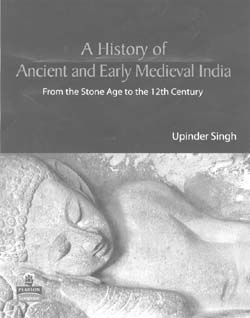Structured into ten chapters, the book starts off with features of the main physiographic zones of the subcontinent, periodization, and changing interpretations of early Indian history. The first chapter constitutes a detailed discussion of literary and archaeological sources. It provides an analytical comprehension of the various literary, archaeological and numismatic sources of ancient and early medieval India with specific indications of the problems as well as potential such sources pose in the context of their utilization in the reconstruction of history. It helps the reader understand that production of verifiable evidence and facts of veracity based on authentic sources forms the basic requirement for historical reconstruction and that the corroboration of facts in the sources is an essential exercise. Since it is the transparency of the logical relationship between the source based premises and the explanatory conclusion that makes history reliable, the chapter draws on the need for and difficulties in the integration of different sources.
The second chapter is on the Stone Age hunter-gatherers whose history constitutes the longest part of the human past. The author discusses the geological ages and the corresponding life forms, archaeology of the hominid fossils, palaeo-environments, the tripartite classification of the Stone Age in the subcontinent, the tool technology and life-ways of the Stone Age hunter-gatherers, the Mesolithic graves, subsistence, settlement patterns, Microliths, and the Mesolithic Rock-art in detail with the help of beautiful visuals by way of drawings, photographs, line drawings, charts and maps. The chapter shows how Mesolithic people fanned out into new ecological niches.

